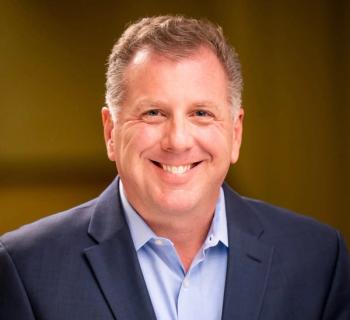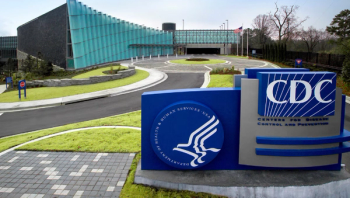
WellSpan Health CEO discusses strategy, expanding access to care, AI, and more
In an interview with Chief Healthcare Executive®, Roxanna Gapstur talks about keeping pace with the rapid changes in healthcare and planning for the future.
During the COVID-19 pandemic, plenty of hospitals and health system focused on the crisis at hand.
WellSpan Health CEO Roxanna Gapstur said the pandemic posed a host of challenges for the Pennsylvania hospital system. WellSpan endured three surges of COVID patients, and Gapstur noted that its south-central Pennsylvania region is “under-bedded.”
“That's been a challenge for us in general, but it certainly was exacerbated during the pandemic,” Gapstur says. “And so we had to be very intentional about working as a system across our eight hospitals in order for us to really meet the needs of the communities here during the pandemic.”
Some hospital systems had to put the brakes on long-term planning during the pandemic. But Gapstur says she made sure WellSpan continued looking to the future even when dealing with the flood of COVID patients.
“I had actually split my team into two parts,” Gapstur says. “One part of my team was completely focused on operations and just making sure that we took care of our communities. The other part of my team was focused on our strategy.”
WellSpan kept part of its team working on its strategic plan, WellSpan 2025, which was launched before the pandemic. She says the system is focused on expanding access, making care more affordable and delivering care in different ways to meet patient needs.
In a conversation with Chief Healthcare Executive®, Gapstur talked about WellSpan’s efforts to keep pace with the rapid changes in healthcare. She says forming two separate teams played a critical role in keeping momentum for those long-term plans.
“We're moving into the last year of the plan now and we've achieved well over half the goals in the plan,” she says. “And I call that a win, considering that we did that all during a pandemic.”
‘On the forefront’
Gapstur joined WellSpan in January 2019. A registered nurse, she previously served as president of Park Nicollet Methodist Hospital in the HealthPartners system in Minnesota. During her first year on the job, Gapstur says she spent time getting to know the region.
“Each of our markets is a little bit different and unique, which makes it fun,” she says. “And then of course a year later, we had the pandemic.”
Gapstur says maintaining strategic planning even amid the COVID-19 pandemic was necessary.
"Healthcare is moving quickly,” she says. “There's a lot of transformation going on. It's allowed us to be on the forefront.”
WellSpan has been changing the way the system delivers care. The system launched its
The health system is also teaming with Emerus to
“They're small and nimble,” Gapstur says. “They also offer access points, right in communities.”
She says they are being built in communities that are more than 20 minutes from one of WellSpan’s hospitals. “That allows people both from Maryland and Pennsylvania in the southern part of our county to be able to have this really quick access point,” she says.
Other micro hospitals are planned in northern York County and in Carlisle.
In addition to providing care, WellSpan has also emerged as a payer. The system is offering a handful of
“It's been a very good thing for our physicians and care teams, because we're really focused on doing the right thing for the member and patient,” Gapstur says. “What's the most affordable care, what's the highest quality care, versus just doing more things to people. So we're really on that value-based care journey and we've been rewarded for that financially.”
Gapstur notes that there is speculation about whether hospitals can succeed with that model, and she says more changes are needed.
But she adds, “We're committed to continuing to innovate on that because affordability is the number one concern in this country, as you know, and moving away from care that can be more affordable … that's never going to be the right direction.”
Using AI
WellSpan is expanding its use of artificial intelligence across the organization, and Gapstur says the system is focusing on using AI to reduce administrative hassles for clinicians.
The health system recently added Nuance Dragon Ambient eXperience Copilot, or the
“We've scaled that across our medical group so people aren't needing to type in the record,” Gapstur says. “They're not spending as much time on their notes and on their documentation, which as you know, tends to be a real drain for people.”
Clinicians are also using AI to help with responses to patient questions via email, she says. They’ll get an AI draft of a response, revise as needed and then respond to the patient.
“All of these kinds of things make a difference,” Gapstur says.
They’ve also revised their email system to screen for patient responses that simply say, “OK, thanks,” in response to a physician. Those short emails are no longer going to the provider, and Gapstur said that’s reduced the number of messages clogging the inboxes of clinicians.
Staffing and diversity
Like many hospital systems, WellSpan faced difficulties in filling certain positions during the pandemic. Gapstur says staffing shortages have improved over the past two years.
“Our vacancy rates are coming down. Our turnover rates are much closer to pre-pandemic (levels). Do we have all the staff we need? Absolutely not,” she says.
WellSpan still grapples with “spotty” shortages in certain areas, such as specialty nurses and medical assistants.
Even before the pandemic, WellSpan struggled to fill some positions. The region’s job market isn’t as large as major metro areas. Plus, WellSpan is competing with large health systems for talent, including UPMC, Penn Medicine and Penn State Health.
“South-central Pennsylvania has always been a little bit of a tougher place,” she says.
WellSpan has hired workers from across the country and allowed some to work remotely, or in hybrid roles, to fill positions, Gapstur says.
WellSpan is working to improve diversity throughout the organization. While central Pennsylvania is more diverse than outsiders may expect, the region has fewer members of minority groups than larger cities. She stresses that WellSpan is seeking diversity in racial and ethnic groups, as well as those of different ages and those who are veterans.
WellSpan is seeing more diversity in the system’s clinicians, in part because medical schools have become more diverse. But she says, “the bigger challenge is in leadership.”
The system has made strides in adding diversity to the leadership ranks, and women hold a number of key posts across WellSpan. Gapstur says WellSpan is striving to have a diverse mix of job applicants, and is looking for a greater mix of people in the system’s leadership development program.
“We want to give opportunities to everyone to be their authentic self at work at WellSpan and really enjoy the work that they're doing here,” Gapstur says.
She says adding diversity to WellSpan’s ranks is an important component in improving health equity. WellSpan routinely looks at quality measures among different racial groups and those with lower incomes, and the system has closed gaps in screening for breast cancer, colorectal cancer and hypertension.
“We've worked very hard on health equity,” she says.








































